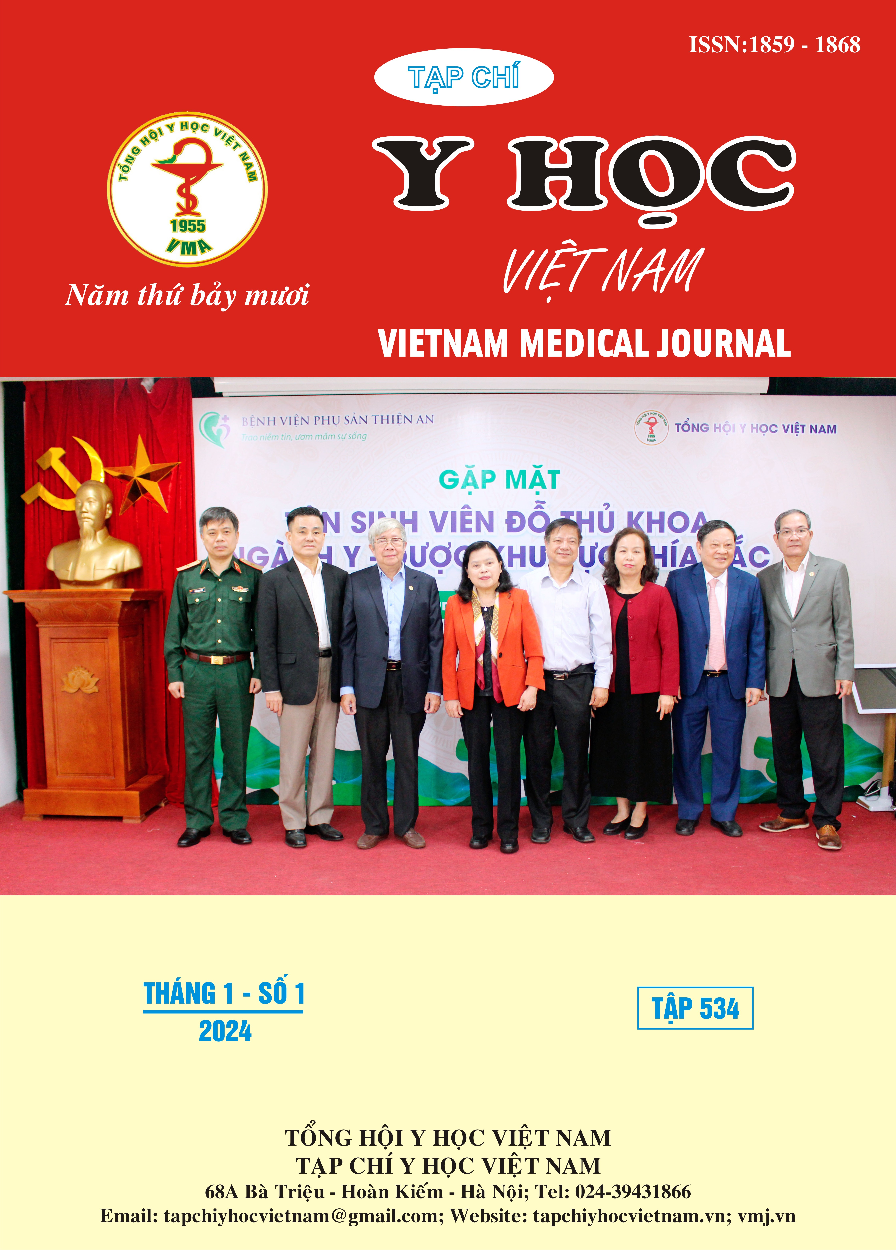TREATMENT OUTCOMES FOR AMELOBLASTOMA USING THE DREDGING TECHNIQUE: A LITERATURE REVIEW
Main Article Content
Abstract
Objective: Overview of studies evaluating the results of ameloblastoma treatment using the Dredging technique. Subjects and methods: Overview research was conducted with documents searched from the electronic databases PubMed and ScienceDirect in English and Japanese. The research question is: “How effective is the Dredging technique when treating ameloblastoma of the jaw?” Results: There were 12 studies that met the criteria for inclusion in the study. There are 5 studies discussing facial symmetry after treatment, of which 3 studies were effective, with an average post-treatment follow-up period of 6 months - 5 years. All 12 studies discussed bone healing on X-rays after treatment, of which 7 studies (58.3%) showed treatment effectiveness. The issue of numbness and paresthesia was mentioned in 6 studies, of which 4 studies had this complication after treatment and therefore the treatment was not effective. Conclusion: Dredging is one of the conservative treatment methods that shows favorable treatment results. The most common post-treatment complication of this technique is facial numbness and paresthesia, and the method requires long-term post-treatment monitoring to ensure complete tumor removal and minimize the recurrence rate. Therefore, doctors need to consider tumor characteristics and patient factors before treatment, especially the level of cooperation to ensure long-term treatment effectiveness of the Dredging technique.
Article Details
References
2. Chana JS, C.Y., Wei FC, et al.,, Segmental mandibulectomy and immediate free fibula osteoseptocutaneous flap reconstruction with endosteal implants: an ideal treatment method for mandibular ameloblastoma. Plast Reconstr Surg, 2014. 113: p. 80-87.
3. Reichart P.A., P.H.P., Sonner S.,, Ameloblastoma: biological profile of 3677 cases. Eur J Cancer B Oral Oncol, 1995. 31B: p. 86-99.
4. Yoichi Ohiro, “Dredging Method” - An Alternative Conservative Treatment of Ameloblastoma, in 11th International Conference on Dental Science and Education “New challenges and opportunities in Dentistry 2021”. 2021.
5. Shakilur Rahman, A. and I. Haider, Ameloblastoma of the jaws: A retrospective observational study of 131 cases at a tertiary level hospital in Bangladesh. Journal of Dental Research and Review, 2022. 9(1): p. 59-65.
6. Nowair, I.M. and M.K. Eid, A modified surgical approach for the treatment of mandibular unicystic ameloblastoma in young patients. Journal of Cranio-Maxillofacial Surgery, 2020. 48(2): p. 148-155.
7. Kakuguchi, W., et al., Application of the dredging method in a case of recurrent ameloblastoma that had spread over a large region of the mandible. Journal of Oral and Maxillofacial Surgery, Medicine, and Pathology, 2020. 32(1): p. 44-48.
8. Sadat, S. and M. Ahmed, "Dredging Method" - A Conservative Surgical Approach for the Treatment of Ameloblastoma of Jaw. Journal of Bangladesh College of Physicians and Surgeons, 2011. 29(2): p. 72-77.


